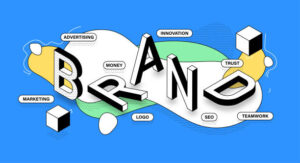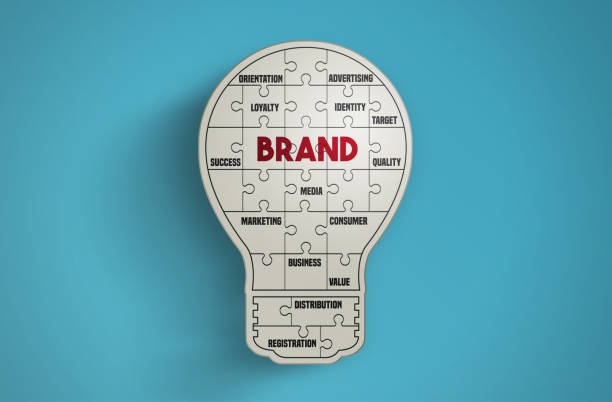Brand development is more than just a logo or a catchy slogan. It is about the message a company shares with its customers. This message, often delivered through storytelling, affects how people feel about a business. A well-crafted story can build trust, create strong emotional connections, and shape the way customers see a brand.
Storytelling has been used for generations to communicate ideas and values. Businesses use the same approach to give meaning to their products and services. When a story feels genuine, it makes a company more memorable and relatable.
This article will explain how storytelling influences customer perception, why it matters for brand development, and how businesses can use it effectively.
Why Storytelling Matters in Brand Development
People connect with stories more than with facts alone. A well-told story draws attention, keeps people engaged, and helps them remember key details. For businesses, this means a chance to leave a lasting impression.
A company without a story may seem lifeless. Customers want to know what a business stands for, why it was created, and how it solves problems. Brand development is stronger when storytelling brings these elements together in a meaningful way.
Stories also create trust. When people hear a company’s history, its struggles, and its victories, they relate to it. This trust influences their buying choices. If customers feel emotionally connected to a brand, they are more likely to stay loyal.
How Storytelling Builds Emotional Connections
Creating a Sense of Belonging
When a brand shares a story that aligns with a customer’s beliefs, it creates a sense of belonging. People enjoy feeling connected to something bigger than themselves. If a company’s message matches their values, they are more likely to support it.
For example, a clothing company that shares stories about sustainability attracts buyers who care about the environment. These customers do not just buy clothes; they invest in a brand that reflects their values.
Using Emotions to Influence Decisions: Brand Development
Studies show that people make decisions based on emotions rather than logic. A touching story about how a product helped someone in need can be more persuasive than a list of features.
Brands that use emotional storytelling create deeper connections. They move beyond selling products and start building relationships with their customers.
Making a Brand More Memorable
People remember stories much longer than they remember facts. A compelling story helps customers recall a brand when they need a product or service.
For example, a car company that shares a heartfelt ad about a father teaching his daughter to drive will stay in people’s minds longer than one that only highlights safety features.

The Role of Storytelling in Customer Perception: Brand Development
How Customers See a Brand
The way a business presents its story shapes customer opinions. A brand that shares a strong, consistent message appears trustworthy. On the other hand, a company with no clear identity may seem unreliable.
If a business’s story is inspiring, customers may see the brand as forward-thinking. If the story is about overcoming hardships, it may be seen as determined and strong.
Why Honesty Matters: Brand Development
Customers can tell when a brand’s story feels fake. If a company makes claims that do not match its actions, people lose trust. Businesses must make sure their storytelling aligns with reality.
For instance, if a company promotes itself as caring about fair wages but is caught underpaying workers, its reputation will suffer. Customers want honesty, and once trust is broken, it is difficult to repair.
The Power of Consistency
A strong brand keeps its message the same across all platforms. Whether through social media, advertisements, or customer service, the story should remain clear.
If a brand presents itself as friendly and helpful but has rude customer service, people will notice. Consistency helps reinforce a company’s identity and keeps customers loyal.
Ways to Use Storytelling in Brand Development
Know Your Audience
A good story speaks directly to the people who will listen. Businesses must understand their customers’ values, problems, and desires. This helps create stories that feel personal and relevant.
For example, a skincare brand aimed at young adults might share stories about confidence and self-care. Meanwhile, a brand targeting parents may focus on the importance of safe, gentle products for children.
Use Real Experiences
Nothing connects with people more than real-life stories. Companies can share their journey, the inspiration behind their products, or customer testimonials.
For example, a small business that started in a garage and grew into a successful company can inspire others. Customers love to hear about passion and hard work.

Focus on the Problem and the Solution: Brand Development
The best brand stories highlight a problem and how the company solved it. This structure keeps people engaged and helps them understand why a product or service matters.
For example, a fitness brand might share how its founder struggled with health issues and created a solution to help others. This makes the brand feel more personal and relatable.
Use Visuals and Emotion
A story becomes more powerful with images and videos. Showing behind-the-scenes moments, customer experiences, or company milestones makes the message more engaging.
A brand that uses emotional storytelling through video ads, blog posts, and interviews leaves a stronger impression than one that relies only on written text.
Keep It Simple and Clear
Overcomplicated stories lose their impact. The best stories are easy to understand and straight to the point. Brands should aim for clarity, making sure the message is clear from the start.
Examples of Successful Brand Storytelling
Apple
Apple’s storytelling focuses on innovation and creativity. It shares stories of people using its products to change the world, inspiring customers to see themselves as part of that vision.
Nike
Nike’s message revolves around perseverance. The brand tells stories of athletes overcoming challenges, encouraging customers to push their limits.
Coca-Cola
Coca-Cola’s storytelling is centered around happiness and togetherness. Its advertisements show people sharing moments of joy, making the brand feel warm and inviting.

Conclusion: Brand Development
Storytelling is a powerful tool in brand development. It shapes customer perception, builds emotional connections, and strengthens trust. A strong brand story makes a business more relatable and memorable.
By understanding their audience, using real experiences, and keeping their message consistent, companies can create stories that leave a lasting impact.
A well-told story does not just sell a product; it creates a loyal community of customers who believe in what the brand stands for.








